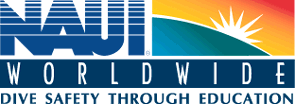| Der nachfolgende Text wurde allen NAUI Instruktoren via eMail zugestellt und befasst sich mit den kürzlich weltweit eingeführten neuen Regeln bezüglich CPR.
Interessant dabei, dass nach den Richtlinien der AHA Tauch-lehrer (scuba instructors) und Aufsichtspersonen (à la Lifeguards, Divemaster, Dive Leaders) nicht als Laienhelfer ("lay rescuers"), sondern als "healthcare providers" eingestuft sind.
|
 |
|
New Guidelines for Cardiopulmonary Resuscitation
The American Heart Association recently issued new guidelines for CPR and Emergency Cardiovascular Care. The new guidelines are drawn from the findings of a 36-month evaluation process that was followed by an International Consensus Conference held early this year.
They are published in the December 13, 2005, issue of the AHA journal “Circulation” http://circ.ahajournals.org/content/vol112/24_suppl/; a summary appears in the Winter 2005 issue of their “Currents in Emergency Cardiovascular Care” (http://www.americanheart.org/downloadable/heart/1132621842912Winter2005.pdf).
The changes in CPR protocols are extensive and basic. Emphasis is now on simplifying instruction for the lay rescuer, increasing the number of chest compressions given per minute, and reducing interruptions in chest compressions during CPR. Some of the most significant changes recommended in the guidelines are:
A single (universal) compression-to-ventilation ratio of 30:2 is recommended for single rescuers of victims of all ages (except newborn infants). Chest compressions are delivered in the center of the chest, between the nipples. Chest compressions are to be at a rate of 100 per minute (“push hard, push fast”). Rescue breaths are to be given over one second with sufficient volume to achieve visible chest rise.
Greater emphasis is placed on the use of automatic external defibrillators (AEDs). See below.
Lay rescuers:
Lay rescuers will be taught to begin chest compressions immediately after delivering two rescue breaths to the unresponsive victim who is not breathing. There will be no assessment of signs of circulation. Moreover, lay rescuers will no longer be taught rescue breathing without chest compressions.
Healthcare providers: (Includes those with a duty to respond, e.g., lifeguards and scuba instructors/leaders)
After delivery of the two initial rescue breaths, healthcare providers should attempt to feel a pulse in the unresponsive, non-breathing victim for no more than 10 seconds. If the victim does have a pulse, healthcare providers will deliver rescue breaths without chest compressions (at a rate of about 10 to 12 breaths per minute for an adult and about 12 to 20 breaths per minute for a child or infant). If a pulse is not felt within 10 seconds, the provider should begin cycles of chest compressions and ventilations.
The lone healthcare provider should alter the sequence of rescue response based on the most likely etiology of the victim’s problem.
For sudden collapse in victims of all ages, the lone healthcare provider should telephone the emergency response number, get an AED (if available), then return to the victim to begin CPR and use the AED.
For unresponsive victims of all ages with likely asphyxial arrest (such as drowning) the lone healthcare provider should deliver about five cycles (about two minutes) of CPR before leaving the victim to telephone the emergency response number and get the AED.
If an AED is being used, only one shock will be delivered, followed immediately by CPR (beginning with chest compressions) instead of three stacked shocks.
The new guidelines will be implemented in Spring 2006 as revised course materials to support them become available. NAUI is currently preparing new materials for teaching both first aid and CPR that will incorporate the new guidelines for CPR and ECC.
No specific date for implementation has been set as yet, and instructors may continue to use the present texts and techniques of CPR until the new revised material is available. It is also permissible to incorporate the new changes into current courses in advance of the availability of new materials at an instructor’s discretion.
Also noteworthy: Included in the 2005 guidelines are, for the first time, specific chapters and recommendations on other emergency care subjects, including hypothermia, anaphylaxis, electric shock, drowning, and general first aid.
|
